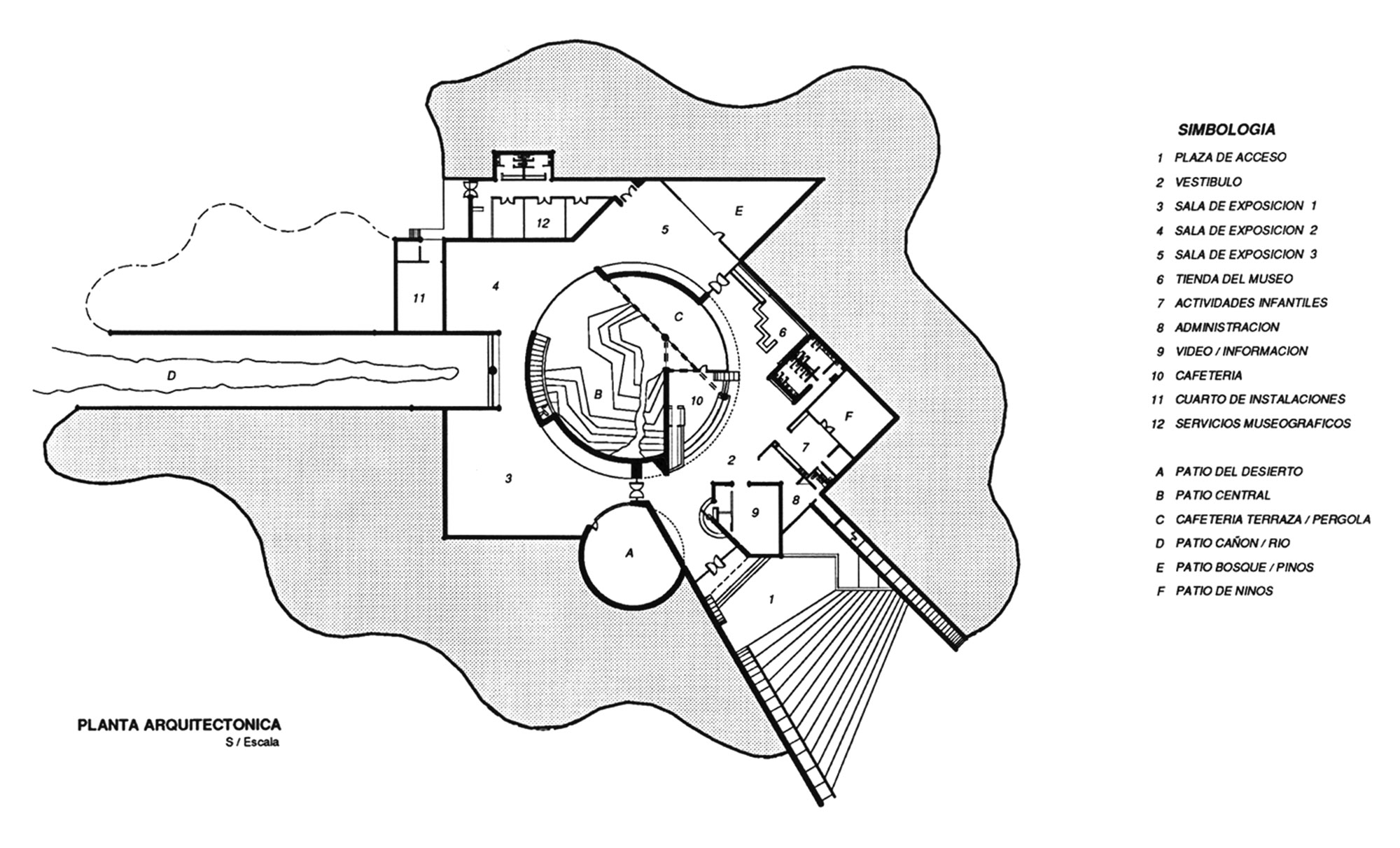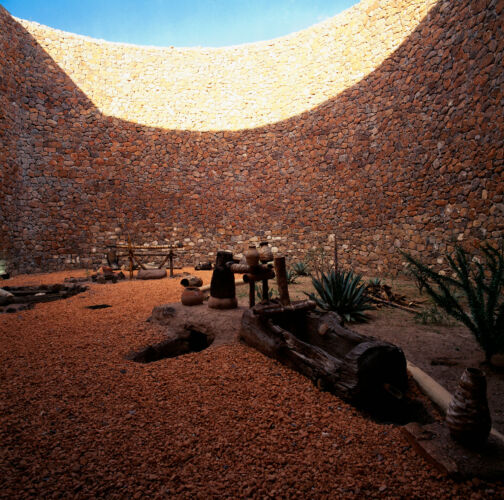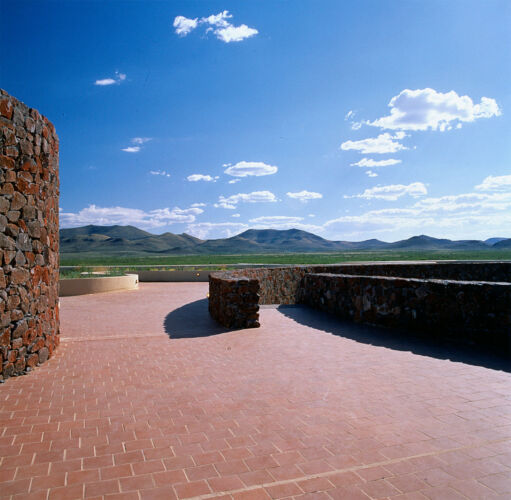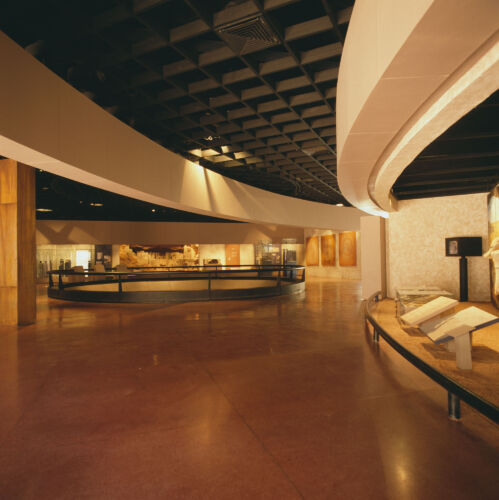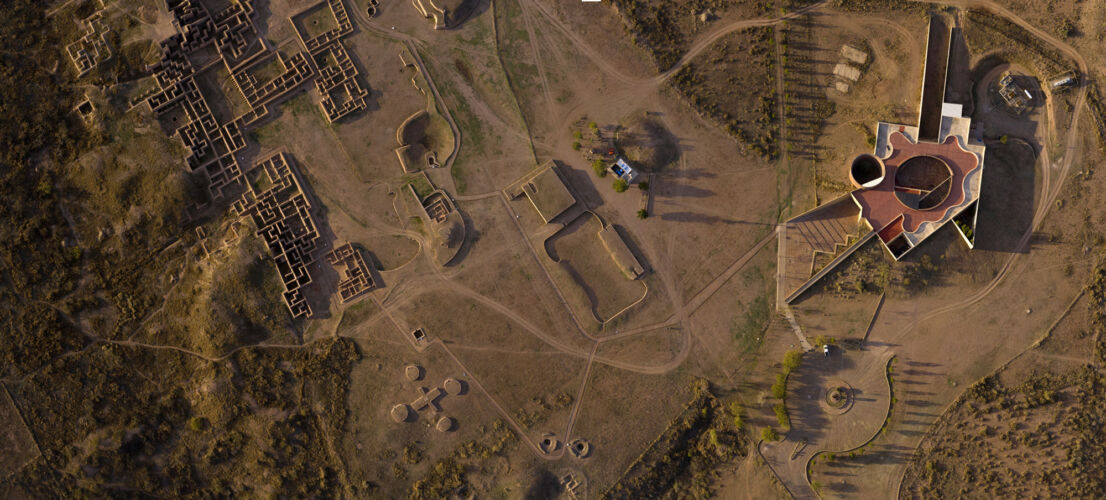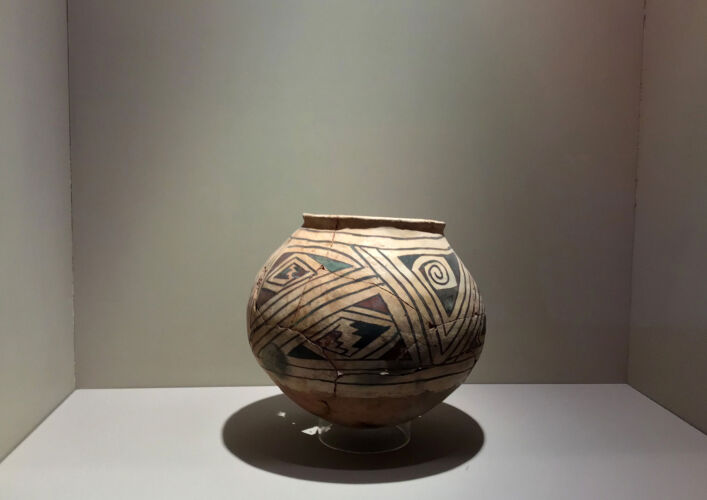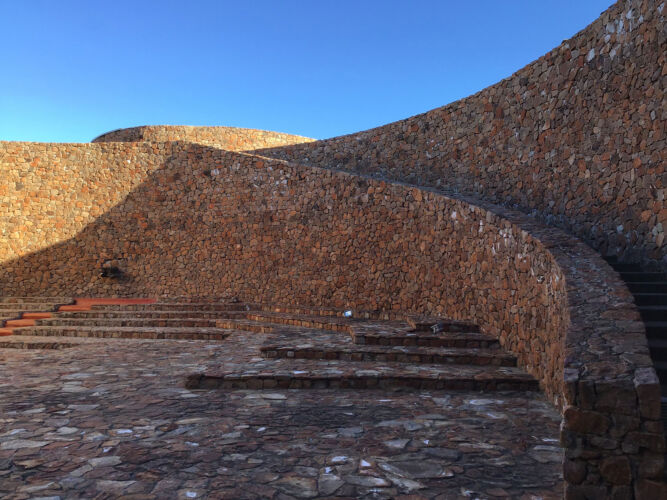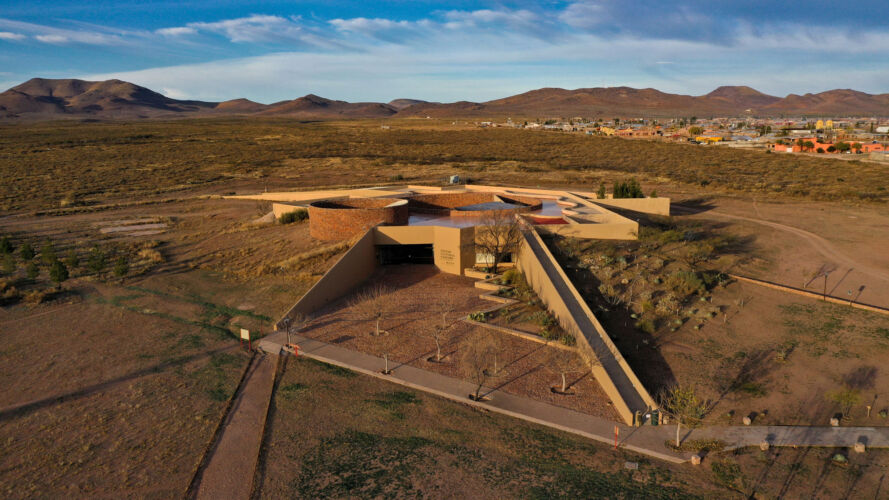The site museum is located within the beautiful and stunning ruins of Paquimé, declared a UNESCO World Heritage Site in 1995. Based on an analysis of the exquisite and delicate archaeological surroundings of rammed earth walls, a “topographical” architecture was decided upon, burying part of the building into the ground and creating slopes that subtly integrate it into the Chihuahuan desert. The building’s shape is a reinterpretation of the kiva, a religious and communal building of pre-Hispanic cultures in northern Mexico and southwestern United States. The entire museum revolves around a large circular courtyard, with each of its three rooms relating to a different themed patio.
Access to the building is through a sloping plaza, and from the central courtyard, visitors can access the roof-cover: a lookout point that allows for the observation of the ruins of Paquimé and the vast plains that lead to the Sierra Madre Occidental.
In this place, a strong relationship is established between archaeology, materiality, and landscape with the sky and the earth.
Throughout the project, there was a continuous dialogue between architects, museographers, and historians, integrating form and content into an integral product.
